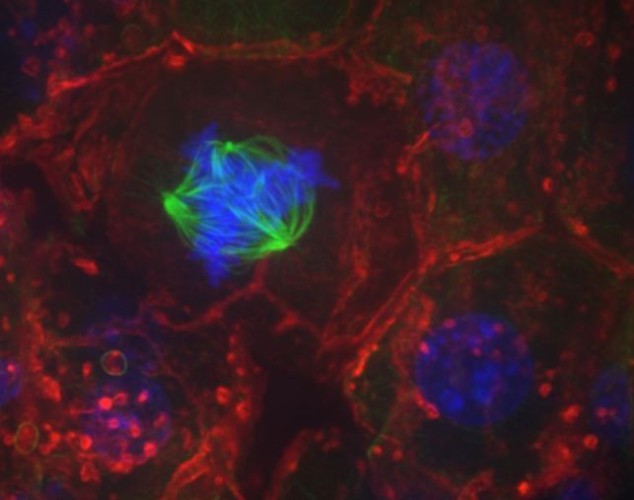Ashley Junger | Koch Institute, August 23, 2018
Biologists discover that the environment surrounding a cell plays an integral role in its ability to accurately segregate its chromosomes.
All growth and reproduction relies on a cell’s ability to replicate its chromosomes and produce accurate copies of itself. Every step of this process takes place within that cell.
Based on this observation, scientists have studied the replication and segregation of chromosomes as a phenomenon exclusively internal to the cell. They traditionally rely on warm nutritional cultures that promote growth but bear little resemblance to the cell’s external surroundings while in its natural environment.
New research by a group of MIT biologists reveals that this long-held assumption is incorrect. In a paper published this week, they describe how some types of cells rely on signals from surrounding tissue in order to maintain chromosome stability and segregate accurately.
Kristin Knouse, a fellow at the Whitehead Institute, is the lead author of the paper, which was published online in the journal Cell on Aug. 23. Angelika Amon, the Kathleen and Curtis Marble Professor in Cancer Research in the Department of Biology and a member of the Koch Institute for Integrative Cancer Research, is the senior author.
“The main takeaway from this paper is that we must study cells in their native tissues to really understand their biology,” Amon says. “Results obtained from cell lines that have evolved to divide on plastic dishes do not paint the whole picture.”
When cells replicate, the newly duplicated chromosomes line up within the cell and cellular structures pull one copy to each side. The cell then divides down the middle, separating one copy of each chromosome into each new daughter cell.









 Follow us on Linkedin!
Follow us on Linkedin!